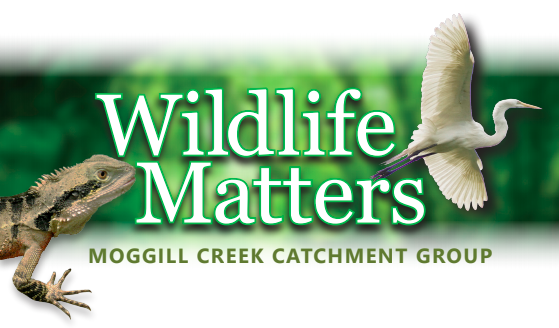A Baboon on my bin!
While trimming and binning branches in suburban Kenmore, I noticed that I was being watched by a recently displaced eight-legged resident, that had climbed out of the foliage in my familiar red Brisbane City Council rubbish bin. With prominent white facial hairs contrasting with a dull black head and large, close-set, knowing eyes forming little black mirrors, the resemblance to an African baboon or middle-aged gorilla was remarkable. Add to this the impressive black mouthparts and muscular, colourful legs set in dynamic stance, all went to make this small animal leave a big impression on me.
Northern Green Jumping Spiders (Mopsus mormon) are common suburban residents in leafy gardens. Reaching 15 – 18 mm in size, they are thought to be one of the larger jumping spiders in Queensland. They are part of the Salticidae (jumping spider) family, a very large and diverse group of spiders in Queensland, forming a very significant part of the natural biodiversity present within the Moggill Creek catchment. They exhibit sexual dimorphism, with females larger, and greenish overall, with orange and whitish markings on their head. Males have blackish heads, with a black topknot and whitish side whisker-like hairs. Viewed close-up, both sexes are remarkably colourful.
Active and sophisticated hunters, Northern Green Jumping Spiders, search and locate prey using their very large eyes. True to their moniker, they can jump significant distances to capture prey, and are excellent at plotting and planning their maneuvers, due to their great visual acuity. A safety or dragline attached to their abdomen stops them from falling too far in the rare event they miss a prey item. As undiscerning predators, Northern Green Jumping Spiders feed on many kinds of insects, but moths, flies and ants (and sometimes other spiders) found on trees and shrubs are common prey. As skilled and daring hunters, sometimes prey much larger than their own body size may be taken (such as damselflies or small grasshoppers).
Females are involved in nest preparation, with an elongate leaf rolled into a cylinder, and a whitish web-nest or egg sac constructed in which eggs are laid. Three compartments, one with the eggs, another with the female, and the other the male, are constructed, which suggests cooperative parental care or defense. Some behaviors observed strongly indicate nest guarding.
I left my red bin lid open overnight, to let any other insects in the foliage escape, and hopefully make it back to safety. But I thought about the baboons in my back garden for quite a while.
Sandy Pollock




